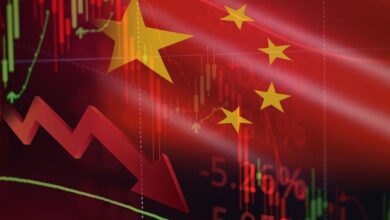The Ascending Trajectory of the Global Rhenium Market and Its Top Producers

The rare metal Rhenium, distinguished by its exceptional characteristics such as a high melting point, outstanding heat resistance and superior electrical conductivity, holds a pivotal role in the advancement of various industries. A marginal dip in output from 59.3 metric tons in 2020 to 59 metric tons in 2021, the market is on the cusp of a significant upswing. Projections indicate an increase of $80.27 million by 2026, propelled by a compound annual growth rate (CAGR) of 10.12% from 2021 to 2026.
North America stands as the dominant force in the Rhenium market, contributing approximately 65% to the global share. The United States, alongside Canada, China, Russia and Germany, ranks as a top consumer, showcasing the metal’s extensive industrial utility. The sector, characterized by a fragmented landscape and a year-on-year growth of 12.38%, is shaped by several emerging trends. The aerospace and aviation industries are spurring demand, leveraging Rhenium’s heat resistance and mechanical robustness. In the realm of energy, the metal’s catalysts find increasing use in fuel cells and hydrogen production. Its excellent electrical and thermal conductivity also renders it invaluable in the electronics sector. Moreover, the chemical industry’s reliance on Rhenium catalysts is on the rise and the healthcare sector’s demand for Rhenium-188, a radioisotope, is growing due to its applications in nuclear medicine. At the helm of the resources sector, entities such as BHP Group, Newmont Corporation and Freeport-McMoRan Inc. are instrumental in sculpting its trajectory.
The hierarchy of the top 10 Rhenium-producing countries is established based on data from authoritative entities like the United States Geological Survey (USGS) and production percentages from E3S Web of Conferences. These nations are cataloged in ascending order of their output, quantified in metric tons. Armenia, contributing 0.26 metric tons, is recognized for its aerospace and defense industry, capitalizing on its geological conditions and reserves of copper and molybdenum. Kazakhstan, with a consistent production of 1 metric ton, employs a sulfuric acid scrubbing solution to reclaim Rhenium from copper concentrates. China’s output of 2.5 metric tons is primarily derived from the Kennecott Process, with Jiangxi Copper Corporation notable for its proprietary process achieving up to 92% Rhenium recovery. The Republic of Korea, with 2.8 metric tons, showcases its industrial and technological prowess in Rhenium production. France, producing 4.24 tons, has risen as a prominent Western European producer, bolstered by the growth of its aerospace industry, automotive sector, biomedical field and the production of Rhenium powder and salt crystals.
The Rhenium market is undergoing a phase of expansion and change, underpinned by the metal’s unparalleled properties and its wide-ranging applications across diverse sectors. The leading Rhenium-producing countries are central to fulfilling the worldwide demand for this scarce metal. The dedication of industry leaders to sustainable methods ensures that the future of the firm production will not only cater to industrial demands but will also consider environmental and societal impacts. The market evolves, the importance of Rhenium in driving technological progress and supporting critical industries around the globe remains unequivocally evident.



